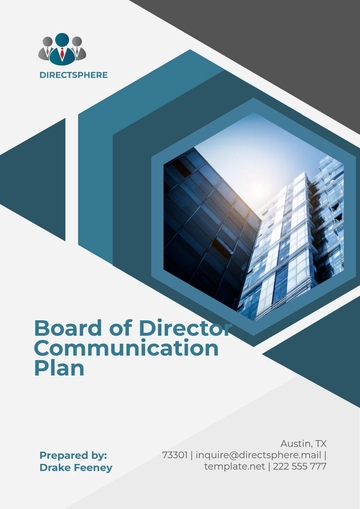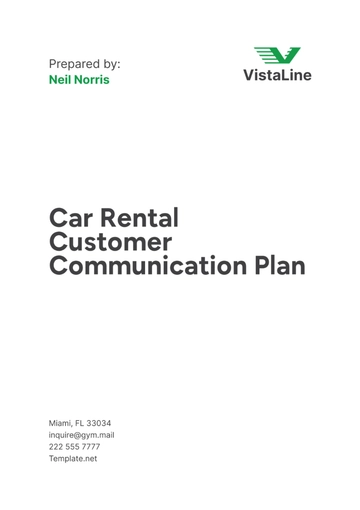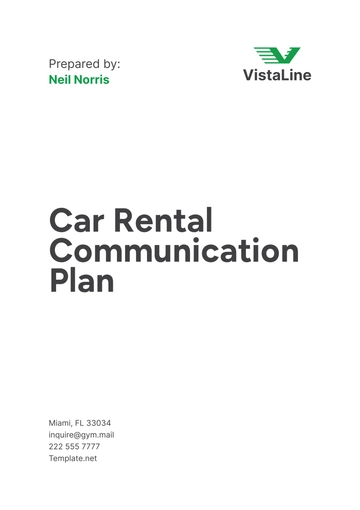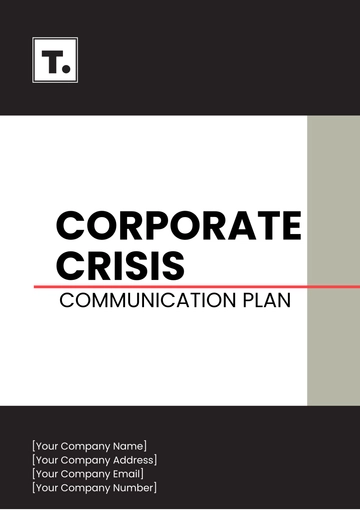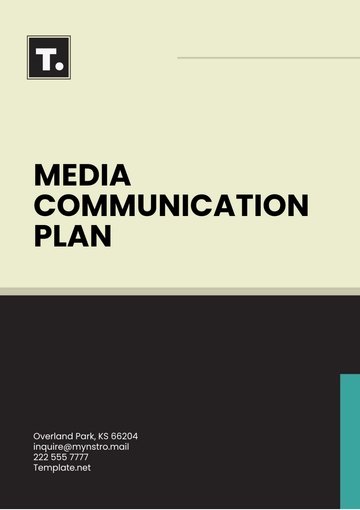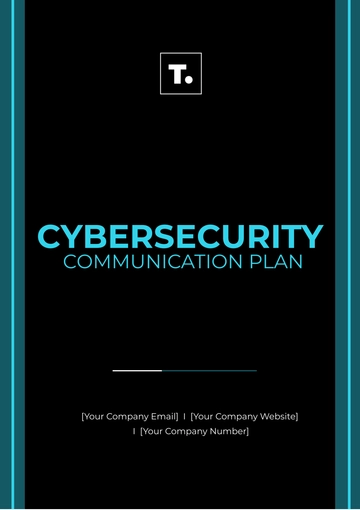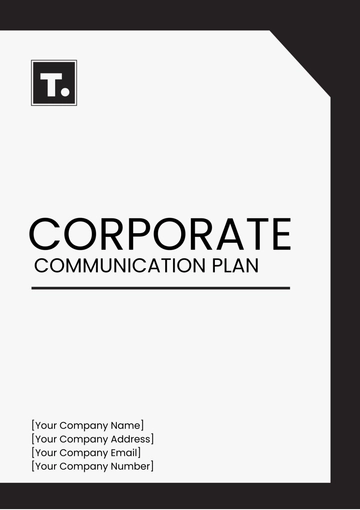Free Media Communication Plan

Prepared by:
[YOUR NAME]
[YOUR COMPANY NAME]
I. Introduction
A Media Communication Plan is essential for ensuring effective communication between an organization and the public. It aligns messaging with the organization's goals, ensures consistency across various media platforms, and establishes clear strategies for outreach. This plan serves as a guide for managing media relations, enhancing public image, and achieving communication objectives.
II. Objectives
The objectives of this Media Communication Plan are to:
Establish clear and consistent messaging across all media channels.
Ensure timely communication with target audiences, particularly during key organizational events, crises, or product launches.
Build and maintain a positive public image through strategic media engagement.
Strengthen relationships with media outlets, journalists, and other stakeholders.
III. Target Audience
This plan focuses on reaching the following groups:
General Public: Consumers, clients, and individuals interested in the organization's activities.
Media Outlets: Local, national, and international press, including newspapers, magazines, TV, radio stations, and online platforms.
Stakeholders: Investors, government agencies, and potential business partners.
Employees and Internal Teams: Ensuring internal communication aligns with external messaging.
IV. Key Messages
The key messages to be communicated will focus on the organization's mission, values, product/service offerings, and any important updates or events. Example messages could include:
"Our commitment to sustainability is at the heart of our operations."
"We are launching a new product designed to meet the needs of today’s consumers."
"As a leader in innovation, we are constantly striving to improve our offerings."
These messages will be adapted for various channels but will retain consistency.
V. Communication Channels
The following media channels will be utilized to convey messages:
Press Releases: Regularly distributed to announce new developments, product launches, or responses to crises.
Social Media: Channels such as Twitter, Facebook, Instagram, and LinkedIn will be used for real-time updates, community engagement, and content sharing.
Email Newsletters: Targeted updates for stakeholders and subscribers, providing in-depth information.
Website & Blog: Centralized hub for official announcements, thought leadership, and detailed content.
TV, Radio, and Podcasts: Interviews, news segments, and advertisements aimed at broader audiences.
Press Conferences and Media Briefings: Conducted for major announcements or crisis management.
VI. Timeline
The communication plan will follow a structured timeline with key milestones. Example timeline:
Date | Action | Channel | Responsible Party |
|---|---|---|---|
Week 1 | Press Release: New Product Launch | Press Release, Website, Social Media | PR Team, Marketing Team |
Week 2 | Social Media Campaign: Product Features | Instagram, Twitter, Facebook | Social Media Manager |
Week 3 | Email Newsletter: Company Sustainability Initiatives | Communications Team | |
Week 4 | Press Conference: Crisis Management | TV, Online Platforms | Executive Team, PR Team |
Ongoing | Weekly Social Media Updates | Social Media | Social Media Manager |
VII. Roles and Responsibilities
The roles and responsibilities within the Media Communication Plan include:
PR Team: Draft and distribute press releases, coordinate media interviews, and handle crisis communication.
Marketing Team: Align media efforts with broader marketing strategies, and provide content for social media and newsletters.
Social Media Manager: Manage daily social media updates, interact with followers, and monitor engagement.
Executive Team: Approve key messages, oversee critical communications during crises, and represent the organization in media interviews.
Graphic Design Team: Create visuals and media assets for digital and print materials.
VIII. Monitoring and Evaluation
To assess the success of the Media Communication Plan, the following metrics will be tracked:
Media Coverage: Number and quality of media mentions across different channels.
Audience Engagement: Social media interaction (likes, shares, comments), website traffic, and email open rates.
Public Perception: Sentiment analysis of media coverage and social media conversations.
Crisis Response Effectiveness: Timeliness and clarity of communications during a crisis.
Regular evaluations will be held monthly to review progress and make adjustments as needed.
IX. Contingency Plan
In case of unexpected challenges such as a PR crisis or sudden changes in the communication environment, the following steps will be followed:
Immediate Response: Activate the crisis communication protocol, which includes immediate internal meetings and external messaging within hours.
Media Monitoring: Intensify media monitoring to track coverage and public sentiment.
Message Adjustment: Adjust key messages based on new developments and the nature of the crisis.
Stakeholder Communication: Inform key stakeholders (investors, employees) promptly to maintain transparency.
X. Conclusion
This Media Communication Plan serves as a comprehensive guide for navigating the complex landscape of media relations. By outlining key strategies, target audiences, and communication channels, the plan ensures that the organization’s messages are conveyed effectively, maintaining a positive public image and engaging with all relevant stakeholders.
- 100% Customizable, free editor
- Access 1 Million+ Templates, photo’s & graphics
- Download or share as a template
- Click and replace photos, graphics, text, backgrounds
- Resize, crop, AI write & more
- Access advanced editor
Craft effective communication strategies with Template.net's Media Communication Plan Template. Fully editable and customizable, tailor it to suit your brand's unique needs effortlessly. Utilize our Ai Editor Tool to refine every detail, ensuring your plan effectively conveys your message across various media channels for maximum impact and engagement.



